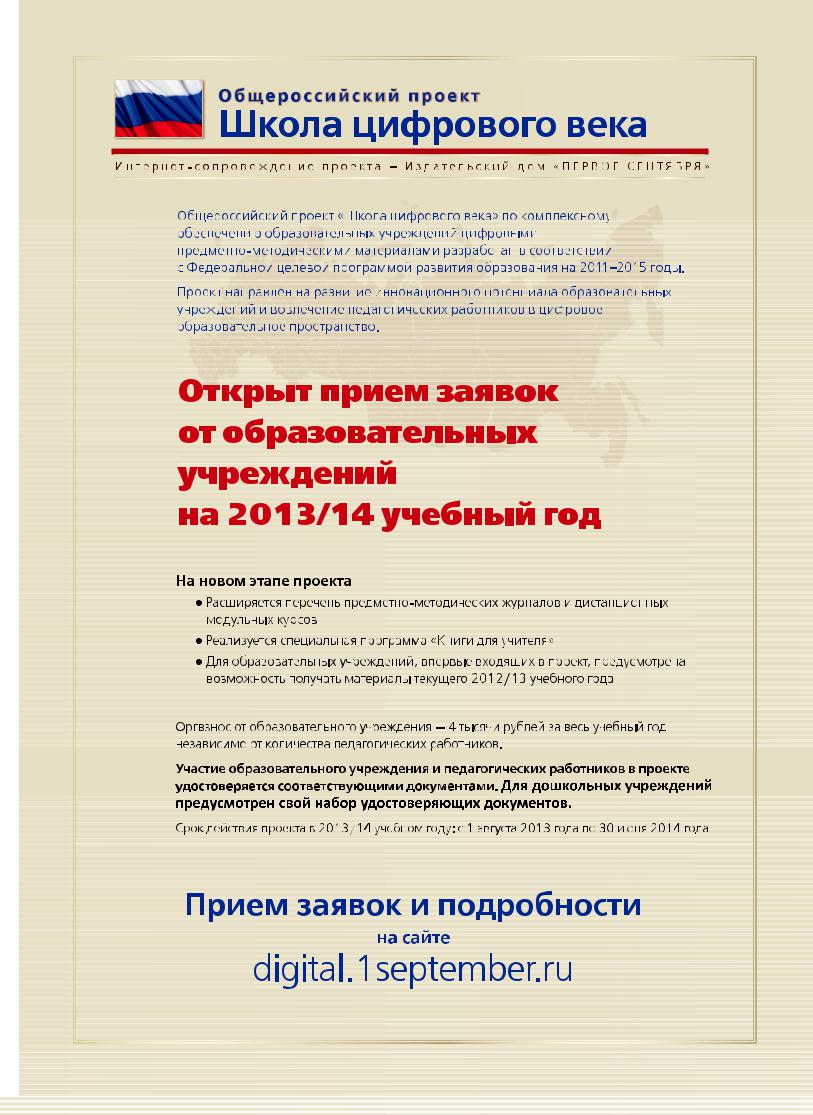
- •NEWS IN BRIEF
- •TEXTS FOR READING
- •London’s Newest Attraction and Symbol of Confidence
- •Impostor
- •METHODS OF TEACHING
- •CLASSROOM ACTIVITIES
- •English Club
- •CREATIVE WRITING
- •Hobbies Differ Like Tastes
- •FOCUS ON LANGUAGE
- •Crossword “Hobbies”
- •DISCOVERING THE PAST
- •Test Your Knowledge
- •LESSON PLANS
- •TOPICAL JOURNEY
- •Leisure Time in the Past
- •English Words and phrases for Free Time and Hobbies
- •Collecting as a Hobby
- •Interesting Facts
- •Creative Hobbies
- •Types of Hobbies
- •Popular Hobbies
- •Hobbies in Books
- •SCHOOL THEATRE
- •The Little Prince
- •PREPARING FOR EXAMS
- •My Hobbies
- •TESTS
- •Five-Minute Tests
- •FOR YOUNG LEARNERS
- •Primary School Olympiad
- •GOOD NEWS
- •YOUTH ENGLISH SECTION

English |
|
YOUTH ENGLISH SECTION |
|
56 |
|
continued from No. 3 |
|
April 2013 |
BETWEEN THE CONTINENTS: |
||
American Reality with Russian Eyes
Drop Worth a Sea/Professors Help Guest Students
Exchange programs are very popular in the U.S. and international students find a warm welcome …to make Americans aware of other cultures.
The first Americans I met warned me, “Americans care about nothing but America.” I am very glad that Eastern Michigan’s faculty proves the opposite. By coordinating various exchange programs or just lending a helpful hand to a newcomer when necessary, the EMU staff strives to make the campus multinational.
I hope this will enlarge a bit of students’ knowledge of geography because many evidently lack it.
Most Americans knew where Russia is situated. But I had pity for my friend from Tajikistan; she had crammed the vital addition “Central Asia” to the name of her country to give a hint where she is from. Sometimes even the name of the continent didn’t help.
A.T. of India told me a funny episode that took place at the international spirit station several years ago. His friends and he organized a little test in geography during the International Week at EMU. Students would pick up a piece of paper with a country’s name on it. To get a prize they were to show the country on the world’s map or to identify the country’s flag. One American girl chose Canada but could not find it on the map, pointing at Mexico instead. Isn’t it absurd? Canada’s casinos light up Detroit at night from the other bank of the river, which was a 45 minute drive away from Eastern Michigan University.
I also heard from Americans that it is necessary to be at war with a country in order to think of other nations. Once I had a student majoring in History as a lunch “conversation partner.” He was interested about what Russians think of Americans. After my short answer I asked him the same question.
“Americans do not think of Russians,” he said.
His argument was Americans think of other people outside America only if they are at war with this country.
From such an angle, the reason for educational exchange programs financed by the U.S. Department of State becomes transparent. Otherwise, globalization for Americans would mean condensing the planet to the size of the United States.
Program coordinators in American universities are often people interested in other cultures. One of them had a “cultural mix” in his house. Beside the collection of DVDs on the shelf in his living-room, there stood nice colorful souvenirs from the Ukraine. The Easter eggs with pictures of all seasons and a typical Russian/Ukrainian wooden doll called “matryoshka” revealed his interest in another culture. All were the presents from grateful Ukrainians – high-school teachers, administrators and teacher trainers, participating in the Democratic Citizenship Education Internship Program.
Another collection of souvenirs from around Eurasia rested on the table belonging to the coordinator of my exchange program. Moreover, notes with Russian words were clipped all over this professor’s room.
The Eastern Michigan staff really cared about other cultures and international students representing them at EMU. It was not necessary to coordinate a special program to contribute to EMU diversity. Simple care was enough sometimes to make me a bit happier. That drop of attention from a professor was worth a sea, because international students left their parents far away from Michigan.
EMU professors could play host to an international guest for five weeks or take a bunch of international students to Chicago and provide them with maps. They could lend me an interesting book to read and fall into a profound discussion of an “American soul.” Their generosity could go as far as to lend a student an extra car or to invite him or her for a Thanksgiving family dinner. It was like a little bright star in the darkness when somebody returned to the building, because a frustrated newcomer was looking for a telephone to call home. A common e-mail with encouraging words “good things invariably happen to good people” could breathe in great energy to go ahead and storm an American reality.
So I could feel care and support in a foreign country. I don’t want to say that Russians lack kindness, hospitality or don’t help one another. But sometimes looking around or after worthless waiting in an hour-long queue when the pay desk is being closed in front of my eyes I ask myself a question: “Why do they treat me like that in my home country?” Every person should be treated with respect, at least, with mere politeness that we often lack here.
Car is God, but not Almighty
Car in the U.S. is a lifestyle/ But for students it’s the best way to open the world around if they pay attention to traffic signs and don’t make an idol out of it.
“Car is God. Car is idol,” I wrote in my first articles about my perception of the American culture and values with a hint of irony. In two months, however, I came to appreciate the advantages of this vehicle. But I felt pity for those who valued the brand of the car more than the opportunities it gave for traveling and exploring the world.
The car is the cheapest and most convenient way to travel in the U.S. – even taking into consideration rent and parking
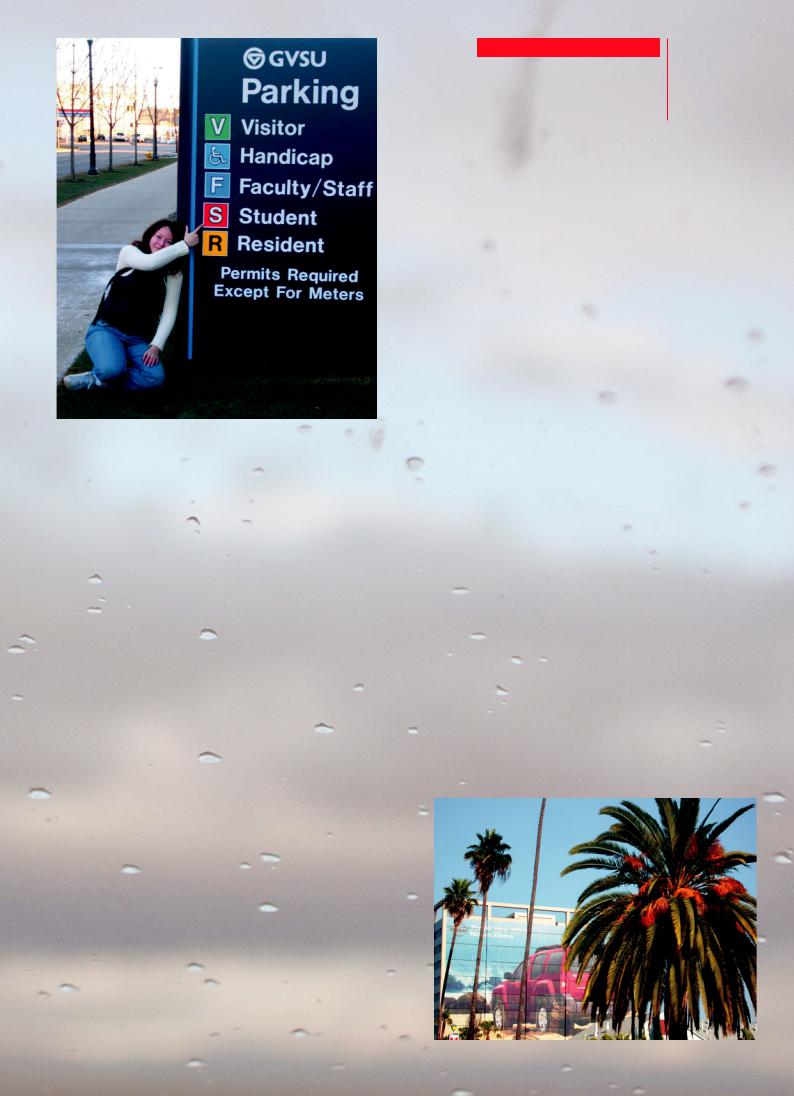
costs. It is so easy to go and see new places, but many ignore that opportunity. We used to plan your weekend in 10 minutes, grab the wheel and let the highway lead us to Chicago or to the middle of nowhere.
Here, in Russia, students don’t travel by car much, as it is more expensive than taking a bus or a train. Train tickets are more common among young people; hiking is the best way to see a lot. There is a special charm in traveling by train as compared to crossing your legs on the back seat of the car. There are no irritating traffic jams, but a merry sound of the train. A train has space and time for a game of cards and warm grandmother’s cookies made from real flour, milk and eggs, not from the add-water-and-enjoy standard mix. I believe trains suit the vast Russia better than hectic cars.
Another argument for the popularity of the train in Russia is that our Russian railways are smoother than Russian roads, though I’ve heard complaints about American roads, too. Taxes or little annoying “30-cent-collectors” blocking the way to Chicago must ensure good quality of the U.S. roads. But roads are not as good as you might expect them to be. In Russia you have jerking on the road free of charge; in America you pay for it. But this doesn’t make a car less attractive. That’s because a car fits so well with American values.
“We want everything faster and more convenient,” I heard from an American peer.
That’s what cars are initially made for. But in the rush for time saving, a car can become very inconvenient. In America, more than anywhere else, driving tickets make traveling by car more expensive. Those pieces of paper from a police officer can break any good spirit to pieces and accidents can delay the most fascinating trip forever. And international students are not an exception, but they maybe lucky to come across a U.S. officer’s understanding.
Marianne Verstappen, 22, of the Netherlands, is one of those who experienced such a situation, though she was very lucky that time.
Verstappen was driving to Detroit and didn’t see the red lights. Something on the dashboard distracted her attention
YOUTH ENGLISH SECTION English
57
April 2013
from the road, and she didn’t stop the car in time to avoid the accident.
“I hit the brakes, but it was too late,” she said.
It was raining, too, which could have prevented the car from a quick enough stop. Verstappen crashed into the car in front of her. That vehicle bumped another car in the front. Fortunately, nobody was injured. When her friend called the police she realized that their trip to Detroit would take much longer.
She told the officer what had happened. After the routine checking procedures, he let her go with a warning.
“I am not going to give you a ticket, but you know you are wrong,” he said.
The fact she was international and was driving a rented car made things a bit easier for her. But I wouldn’t advise anybody to relax on the road either in the U.S. or in Russia.
Another international student from the Ukraine practically got a ticket for her birthday present. After dropping her friend home, she tried to find her way in the new area and did not pay enough attention to the signs. She didn’t realize she was stopped for speeding till the police officer told her about it. Luckily, a ticket didn’t darken her birthday; she drove away with a warning since she had a good driving record. It doesn’t mean, though, she will get away like this the next time. Officers are polite in America, but they do their job well and nobody will think about bribing one.
The car is God in U.S., but not almighty. It’s the driver who counts, not the car. Students in America should use their cars to go and see something new, not to boast in front of their friends. It’s not worth making an idol out of it. A cool brand won’t add much to personal experience unless one takes advantage of the easiest way to travel in America. That’s why my friends and I often got out of the campus in a rented car with a spirit of adventure, though moderated by traffic signs.
By Anastasia Khodakova (Maslova) Photos by the author to be continued
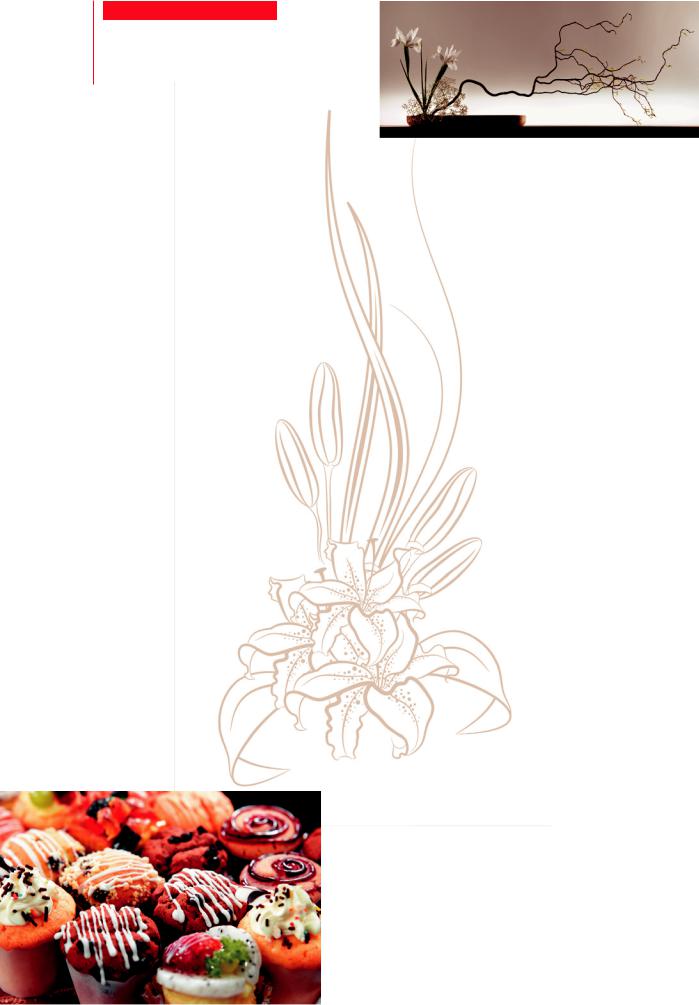
English YOUTH ENGLISH SECTION
58 MY HOBBY
April 2013 Student Stories
My Hobby Is Cooking
As for me, after a long fatiguing day, I want to use this time to while away some hours just doing what I like the best. No matter how tired, fretful or angry I am, this time helps me to clear my mind and reduce tension.
I’m passionate about cooking. Preparing complicated dishes such as Thai curry, beautifully arranged vegetables or fruits, various cream soups and so on, is what I take a delight in. But I’m not going to be a chef in a sort of luxurious French cuisine restaurant or take part in professional cooking contests. This is just not my cup of tea.
What are hobbies for some people are professions for others but that’s not to say that chefs have cooking as a hobby: they might enjoy scuba diving! Why not? For me it’s more like pleasure...
I am a simple, amateur cook, at best. But be that as it may, I bear a certain similarity to master chefs – I have cookbooks (and, of course, my mom who can always give me some useful advice). As a matter of fact, I’m not a genius and I don’t need to reinvent the wheel. Anyway, I always have a possibility to add something more or less to my taste.
But my biggest flaw is my lack of precision and experience. It doesn’t occur to me that dishes turn out badly or well in proportion to one’s attention to detail. For instance, if I got the roast going before I had prepared all the ingredients or if I put muffins in the oven before it had reached the baking temperature, that kind of intuition (or so I think) is, nine times out of ten, precisely reflected in the shape, and even in the color, of the final product. Which genuinely surprises me.
Without a doubt, I like the process of cooking, but the most important to me are the people who I cook for. Whether it is my family or friends, the time of gathering together and eating pleases me. This is all that I need. It’s my remuneration.
By Katya Bazyleva,
School No. 1513 Moscow City Linguistic Gymnasia
Teacher Angelika A. Maximenko
My Hobby Is Ikebana
Living in our modern world and tackling innumerable problems from day to day, seems to discourage us from taking any free time activity up. It makes you want to spend your leisure relaxing on a sofa or sleeping. However, unstructured time also provides the perfect opportunity to start a new hobby you’ve dreamed about. Regardless of your talents and the conditions surrounding you, if you genuinely wish you played piano or could turn a somersault in midair snowboarding, you can make it come true.
The two main ingredients of success you need are your desperate desire and joy. Easy? Well, who knows...? The problem might be hidden in a very simple issue: to find this dream in our materialistic life and take an activity up that will suit you.
In considering hobbies, it took me ages to find something that I’m passionate about. One day, while sitting in front of the “best friend of a modern human” I was invited by “Japanese House” to an ikebana workshop which they conducted. Being fascinated by Japanese art and history, I decided that I must visit it! I thought it was high time to start something new!
Just a click of the mouse to accept, and I found myself helping “sensei” with preparations (as I arrived earlier than the others). Two hours later, I was totally absorbed by binding together pieces of bamboo stems. Having put only a single flower and a thin branch into my handmade bamboo vase, I created a masterpiece (of course, in my humble opinion).
After the workshop the sensei invited me and my sister to attend ikebana classes. That’s how I began my hobby. Ikebana, for me, is not just a way of arranging flowers in a vase; it’s something more special. The essential side of it is the conversation between human and flower, the feelings and emotions you get from the plants you work with.
The ikebana school, named ‘sogetsu’, that I attend and, I would say, am bound to (according to Japanese rules, it’s not permitted to change your school or even the master you’re taught by), is one of three main ikebana schools in Japan. Despite being relatively new, it became very famous throughout the world. What is special about this school is the fact that it has abandoned the so-called ‘fixed style’ and allows each one to freely make their original creation. That is what I like! Expressing myself not just by re-creating traditional patterns, but I’m delighted by combining the colours and the sizes of flowers.
Although I spend every weekend morning studying different basic forms, while I could dream, I do it with great pleasure. Give me flowers to arrange over all the tempting things like TV, computers or whatever else I could spend my free time on. It was the beauty, the fine fragrance and delicacy of the artistry of arranging flowers that involved me at once. I admit it might never let me give it up.
By Valya Bazyleva School No. 1513 Moscow City Linguistic Gymnasia Teacher Angelika A. Maximenko
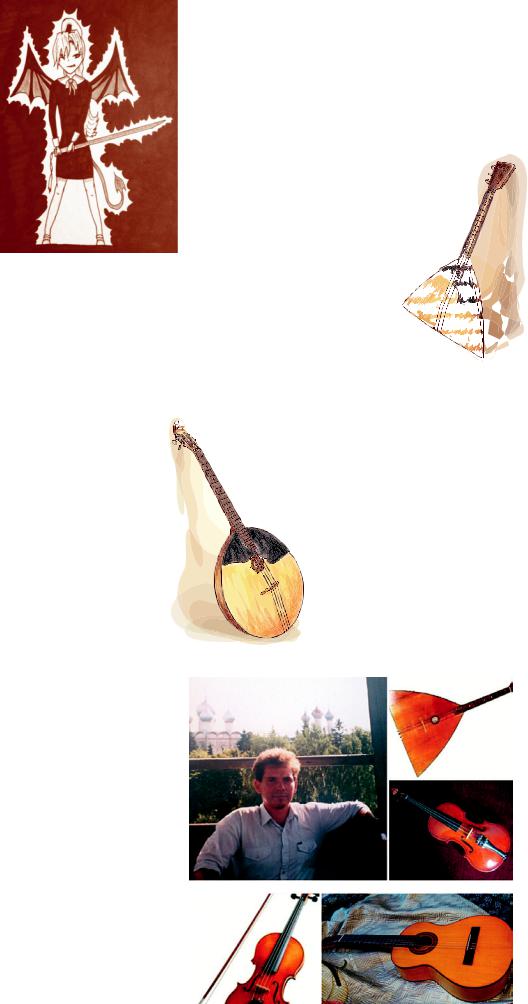
Do you like Japanese cartoons?
Modern society and culture give people a lot of opportunities to practice their hobbies. There are various musical styles, different technical gadgets, films and TV series. Today people can choose what they want to do in their free
time. As for teenagers, they usually organize small groups of like-minded persons, and, out of that, so-called subcultures appear.
Teens do these activities for different reasons: to find friends, to create something together with others, to learn something new, to discuss films or books. People who watch anime also belong to a subculture. Usually, if someone wants to understand what anime actually is, people say “it’s like modern Japanese cartoons”.
I personally (like most anime-fans) don’t like such an interpretation. I would separate anime from films and cartoons as it is different and something special. The concept “drawn series” is more appreciable. Characters with disproportionally big eyes and bright-coloured hair and clothes are the distinctive features of anime-heroes. I mean, traditional ones. But recently there have appeared a lot of exceptions.
A lot of anime genres exist. Classical fantasy, romance and detective are the most typical, whereas mekha (anime about robots and cyber men), doubutsu (anime about humanoid cats, foxes etc), and otaku (anime about anime- and manga-fans) are quite new and special.
Each anime is like a special world with its good and bad characters and its problems, which the main characters have to solve. anime-creators like the theme of magic and the supernatural or even parallel worlds. I am, for example, really excited about these battles between good and evil.
But some anime-series have too many episodes (up to 100–400 episodes!) and when you watch the same fight for the tenth time, you get really get bored. For example, my favourite anime called “One Piece” is about pirates and has more than 500 episodes. Watching the 400th, I felt tired of these jumping figures with their speeches. Maybe, it is very interesting for a 10or 13-year-old child, but if you can predict what is going to happen the next moment, most teens just loose interest.
For me, anime is something that can distract me from a hard day at school, nothing more. But a lot of anime-fans lose their heads and watch anime all day and all night. They put on clothes like their favourite characters, they try to act like them and finally they dissolve into that virtual reality. Fanaticism can be dangerous, and I see no need to get so involved with just a hobby.
|
|
English |
YOUTH ENGLISH SECTION |
|
|
|
59 |
|
|
|
|
|
|
April 2013 |
My Father’s Hobby
My name is Elena. I am fifteen. Every day people get home after school or work they some free time. Everybody likes to spend time doing an activity which is interesting for These activities are called hobbies.
I’d like to tell you about my father’s hobby 
 He collects old-time musical instruments.
He collects old-time musical instruments. 




 There are guitars, violins, mandolins,
There are guitars, violins, mandolins, 











 and even a cello in his collection
and even a cello in his collection 














 which includes more than 30 instru-
which includes more than 30 instru- 




















 ments. The fact I admire most is that
ments. The fact I admire most is that 











 he combines his hobby and his job. My
he combines his hobby and his job. My 








 father has his own studio where he restores
father has his own studio where he restores  musical instruments. Some of them he sells. The
musical instruments. Some of them he sells. The
most interesting and unusual things he keeps in his collection. My father has musical instruments of different Russian 

 balalaika and a bagpipe. Some of the in-
balalaika and a bagpipe. Some of the in-
himself, from scratch, for example,
hobby is entertaining and interesting for
he receives a new order he researches
about the origin and history of the
. He has had his studio for 15 years,
he never feels bored with his work.
think my father is fortunate because he
does what he likes, what he knows and what he cannot live without.
By Elena Andreeva,
School No. 1513 Moscow City
Linguistic Gymnasia
Teacher Angelika A. Maximenko
By Kate Plekhanova,
School No. 1513 Moscow City Linguistic Gymnasia
Teacher Angelika A. Maximenko

English РЕКЛАМА
60

РЕКЛАМА English
61

English РЕКЛАМА
62
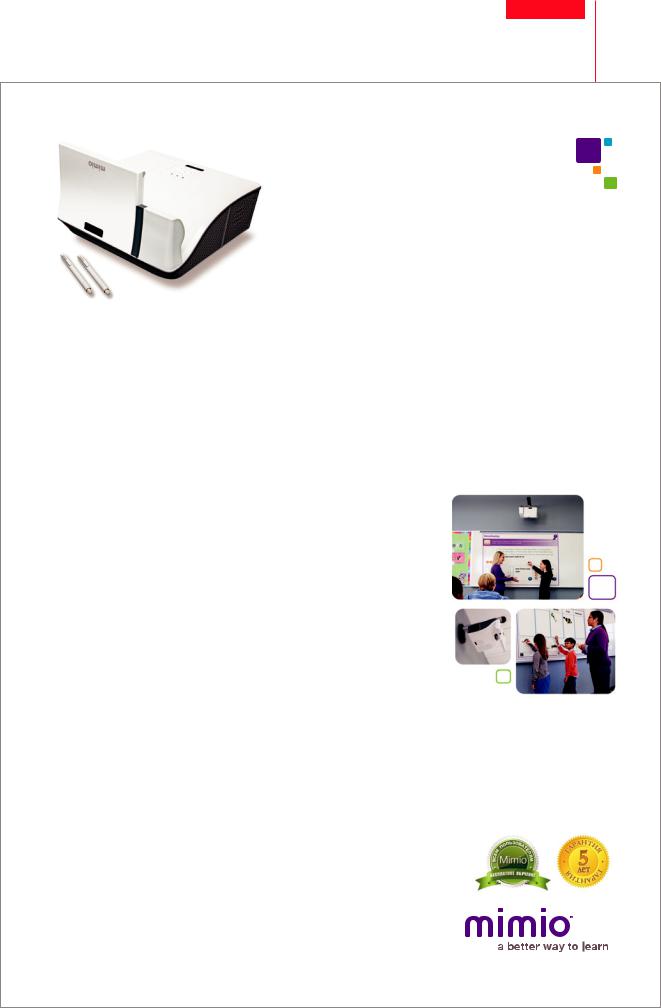
РЕКЛАМА English
63
Интерактивный короткофокусный проектор
MimioProjector
Легкий и доступный способ внедрения интерактивного обучения
в классах, не оборудованных проектором
Кто сказал, что нельзя получить все сразу? Установите MimioProjector, подключите к компьютеру и оживите ваши уроки, используя все возможности интерактивного обучения на маркерной доске.
В вашем классе уже есть маркерная доска, но нет проектора. А еще вы мечтает об интерактивной доске, но на все это не хватает средств? Наш новый интерактивный MimioProjector даст вам возможность внедрить интерактивное обучение, избежав
чрезмерных расходов — ведь он совмещает в себе функции отличного короткофокусного проектора и полноценной интерактивной доски!
Благодаря функции использования двух интерактивных ручек, сразу двое учащихся могут одновременно выполнять манипуляции с объектами на доске, используя все преимущества группового обучения. А ультракороткофокусная модель проектора позволяет снизить количество теней на экране. Проектор легко подключается к компьютеру и позволяет начать использовать имеющуюся у вас маркерную доску или даже светлую стену вашего класса в качестве интерактивной доски. Поставляемое в комплекте с проектором программное обеспечение MimioStudio позволяет вам создавать и проводить увлекательные уроки и управляет всем оборудованием семейства MimioClassroom.
Проектор: широкоформатный (16:10) с разрешением 1280 x 800 точек (WXGA). Коэффициент контрастности до 3000:1. Размер экрана от 70 до 100 дюймов. Интерактивные возможности: рабочая область от 75 до 115 дюймов по диагонали. Одна или две интерактивные ручки в зависимости от комплекта поставки. Проектор можно заказать в комплектации с одной или двумя интерактивными ручками, либо как традиционный проектор без интерактивных функций.
Продажа оборудования, консультации и обучение:
http://www.mimioclass.ru
8 (800) 5555-33-0
Звонок по России бесплатный
ООО «Рене» — генеральный дистрибьютор Mimio в России
